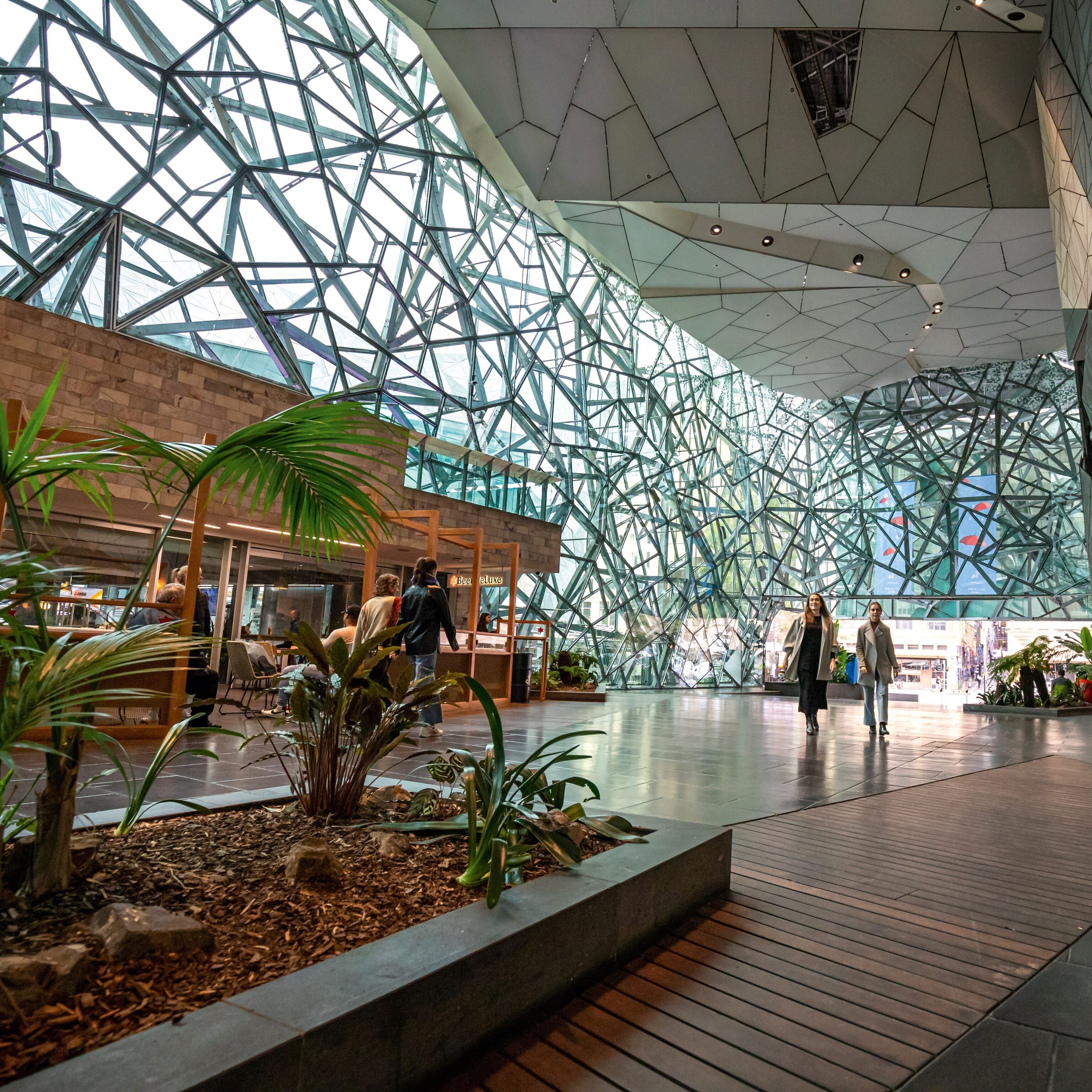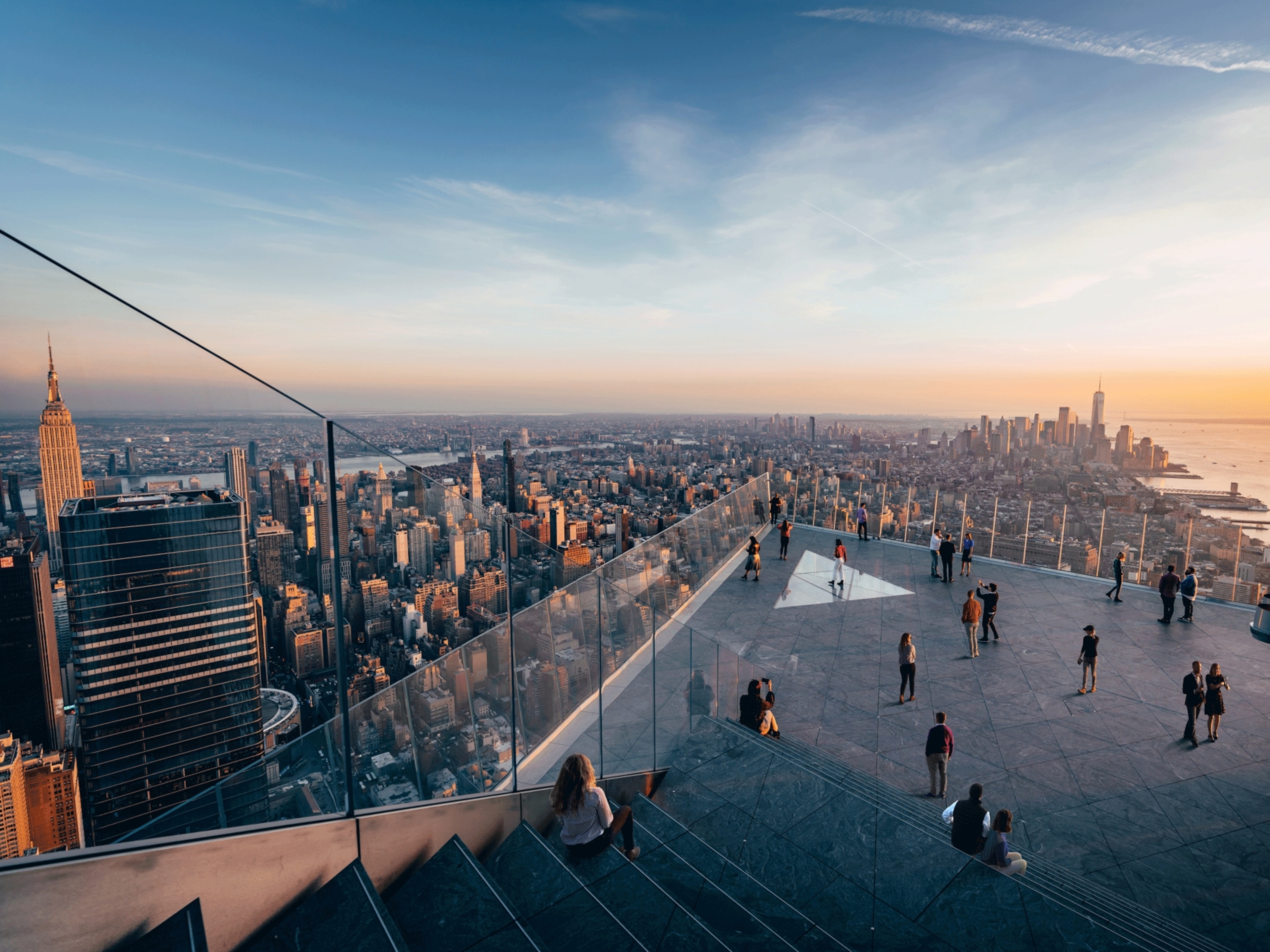
Why Everyone Wants to Move to Melbourne
Victoria’s coastal capital ranks as one of the world’s greatest urban destinations.
Before I traveled to Melbourne, I pressed friends who lived there for suggestions and advice. “You’re going to want to move here,” one warned. “Just be aware.”
Melbourne’s status as a supremely livable city is well-documented, as is its outstanding café culture.
And though the coffee tasted great no matter where I went, it was the local approach to drinking it—the unhurried pace, joie de vivre, and enthusiasm for connecting with other people—that came to define the city for me.
“Melburnians are some of the nicest and most hospitable people I know,” Melbourne-based globe-trotter Marly Lutters told me. “Before you know it, you might be sharing your cheeses, dips, and crackers with the person sitting next to you.”
With its unique blend of nature and culture, Victoria’s coastal capital ranks as one of the world’s greatest urban destinations. Even if you don’t end up moving to Melbourne, here are a few reasons you might be tempted.
> Perfect Balance
Every local I talked to extolled Melbourne’s world-class restaurants, easy-to-use public transit system, hip art scene, and cornucopia of green spaces.
“What’s not to love?” asks Matt Sharpe, assistant manager at Hotel Lindrum, a cool, comfortable boutique property with an ideal Flinders Street location and the best breakfast around. “In Melbourne, you can be yourself. No matter your style, personality, or background, you will be among friends.”
For chef Scott Pickett, a Melbourne native who launched local favorite Saint Crispin in 2014, the city’s greatest appeal lies in the diversity of its cultural offerings. Beyond its “thriving hospitality and food scene,” he cites sporting events like the Australian Open and the Australian Football League’s Grand Final as major draws. Plus, Sharpe adds, “the National Gallery of Victoria always has world-class exhibitions, and the Heide Museum of Modern Art never disappoints.”
And then there are the gorgeous landscapes to be found in and around Melbourne. The bayside city is located a short driving distance from idyllic escapes like the
and Mornington Peninsula, while Yarra Bend Park provides a swath of natural bushland near the heart of Melbourne. “Charting a boat from Victorian Yacht Charters and sailing Port Phillip is another great way to spend the afternoon,” Sharpe says.
“I love the options,” my friend Robyn Parker tells me. “You can enjoy a night in town with dinner and a show, escape to a winery for an open-air concert, or head into the bush for a picnic and a walk—all in one weekend!”
> Pellegrini’s
You’ll run into artisanal coffee shops on practically every street in Melbourne.
But if you’re looking to trace the roots of the city’s caffeine-fueled obsession, look no further than Pellegrini’s Espresso Bar, a longtime local favorite that claims to have brought the first espresso machine to Victoria’s capital in 1954. “Pellegrini’s is authentic and quintessentially Melbourne,” says Anthony Goldman of Travelcall.
> Street Appeal
Melbourne’s Central Business District boasts an incredible grid of 19th-century lanes and arcades, many of which make you feel as if you’re in on some sort of secret.
“I have lived in this great and enigmatic city for seven years, yet still find many hidden treasures,” Sharpe reports.
Don’t hesitate to get a bit lost, advises Lori Latus, an American expat living in the city. “It’s how you find some of the more interesting shops,” she says. Two of her favorite streets? ACDC Lane, which pays homage to Australia’s most famous band, and Flinders Lane.
Parker recommends Little Bourke and Little Collins streets. “They have real stores, not chains,” she says.
> Rooftop Revelry With a Side of History
Naked in the Sky, part of a three-story complex called Naked for Satan, is a favorite rooftop spot for many locals, Lutters among them.
The establishment’s provocative name pays homage to Melbourne legend Leon Satanovich, who came to the city in 1928 to work as a cleaner and caretaker at the Moran & Cato grocery after fleeing the Russian pogroms. When the Great Depression struck and the price of alcohol was at a premium, Satanovich, whose name had been by then affectionately shortened to Satan, decided to follow in his grandfather’s footsteps by making vodka with a few copper boilers he had found in the shop’s warehouse.
The story goes that Melbourne’s soaring summer temperatures combined with the heat coming off the stills made working conditions unbearable. Satanovich’s solution was to ply his trade virtually naked, often wearing only his underpants. When friends and customers came by, eager to partake of his moonshine, they used a code to gain entry: “Let’s get naked for Satan.”
Today, the namesake bar and restaurant keeps Satanovich’s legacy alive with its own brand of infused vodkas and keeps patrons on their feet with a delicious array of pintxos, traditional Basque bar bites.
“True story or not, the restaurant today is beautifully decorated with copper boilers and pipes, and classical pictures of naked people in the hallways,” Lutters says. “Visitors simply grab a plate, select the pintxos they would like to try, and pay for the amount of toothpicks in the end,” she explains.
> Penguins on the Pier
Phillip Island, two hours from Melbourne, may be famous for its nightly Penguin Parade. But the waddling birds (at least about 100 of them) can be found just a few miles from the city center, too.
“All you have to do is walk to the end of the pier in [the suburb of] St. Kilda to see the penguins returning at dusk to feed their chicks,” Latus says. “Have a lovely fish-and-chips picnic on the beach, then [pay the birds] a visit.”
Lutters offers another tip: “The St. Kilda Pavilion, a historic Edwardian kiosk at the end of the pier, is a great place to relax with a cup of coffee and take in your surroundings.”
> “Chloé”
“Chloé,” an oil portrait of a young woman sans vêtements painted by French artist Jules Lefebvre in 1875, caused such a scandal in Melbourne that it had to be prematurely removed from an exhibition at the National Gallery of Victoria.
Now the nubile nude hangs in the Young and Jackson Hotel.
“She was bought for [850 guineas] by the Irish owners of the hotel in 1908 in an attempt to make more ‘young blokes’ have a pint at the bar,” Lutters says. Still staring temptingly back at curious hotel guests and visitors, the painted lady is rumored to be worth millions.
> Bustling Markets
As Latus sees it, the Queen Victoria Market is “where locals and tourists converge” in Melbourne. “The butchers and fishmongers shouting to sell their wares can sound rather musical, even operatic, when they get really worked up.”
And don’t even think about leaving before you’ve tried a börek, a traditional Turkish pastry Latus calls a “Vic market obsession and tradition.” If you have trouble finding the stall (it’s in the delicatessen section), “just look for the mob of people,” she advises.
About two miles south, just across the Yarra River, is where you’ll find what Brydie Hargadon characterizes as the younger sister of the Queen Victoria Market. The South Melbourne Market “is full of great produce, crafts, and flowers,” she says. Her recommendation for a winning plan of attack: “Make sure to get a caramel doughnut before you start shopping.”
Annie Fitzsimmons is Nat Geo Travel’s Urban Insider, exploring the cities of the world with style. Follow her adventures in Victoria, Australia, on Twitter @anniefitz and on Instagram @anniefitzsimmons.
You May Also Like
Go Further
Animals
- Octopuses have a lot of secrets. Can you guess 8 of them?
- Animals
- Feature
Octopuses have a lot of secrets. Can you guess 8 of them? - This biologist and her rescue dog help protect bears in the AndesThis biologist and her rescue dog help protect bears in the Andes
- An octopus invited this writer into her tank—and her secret worldAn octopus invited this writer into her tank—and her secret world
- Peace-loving bonobos are more aggressive than we thoughtPeace-loving bonobos are more aggressive than we thought
Environment
- Listen to 30 years of climate change transformed into haunting musicListen to 30 years of climate change transformed into haunting music
- This ancient society tried to stop El Niño—with child sacrificeThis ancient society tried to stop El Niño—with child sacrifice
- U.S. plans to clean its drinking water. What does that mean?U.S. plans to clean its drinking water. What does that mean?
- Food systems: supporting the triangle of food security, Video Story
- Paid Content
Food systems: supporting the triangle of food security - Will we ever solve the mystery of the Mima mounds?Will we ever solve the mystery of the Mima mounds?
History & Culture
- Strange clues in a Maya temple reveal a fiery political dramaStrange clues in a Maya temple reveal a fiery political drama
- How technology is revealing secrets in these ancient scrollsHow technology is revealing secrets in these ancient scrolls
- Pilgrimages aren’t just spiritual anymore. They’re a workout.Pilgrimages aren’t just spiritual anymore. They’re a workout.
- This ancient society tried to stop El Niño—with child sacrificeThis ancient society tried to stop El Niño—with child sacrifice
- This ancient cure was just revived in a lab. Does it work?This ancient cure was just revived in a lab. Does it work?
Science
- The unexpected health benefits of Ozempic and MounjaroThe unexpected health benefits of Ozempic and Mounjaro
- Do you have an inner monologue? Here’s what it reveals about you.Do you have an inner monologue? Here’s what it reveals about you.
- Jupiter’s volcanic moon Io has been erupting for billions of yearsJupiter’s volcanic moon Io has been erupting for billions of years
- This 80-foot-long sea monster was the killer whale of its timeThis 80-foot-long sea monster was the killer whale of its time
Travel
- How nanobreweries are shaking up Portland's beer sceneHow nanobreweries are shaking up Portland's beer scene
- How to plan an epic summer trip to a national parkHow to plan an epic summer trip to a national park
- This town is the Alps' first European Capital of CultureThis town is the Alps' first European Capital of Culture
- This royal city lies in the shadow of Kuala LumpurThis royal city lies in the shadow of Kuala Lumpur






